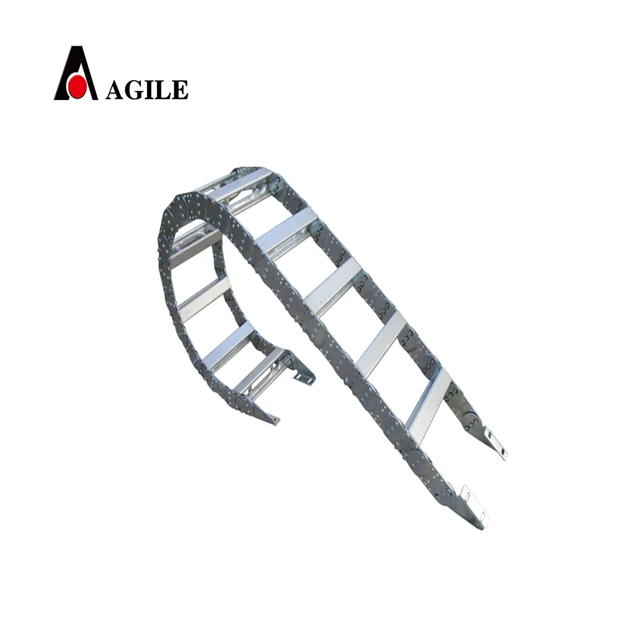Flexible Cable Track Systems Heavy-Duty Protection & Durability
- Introduction to Cable Management Solutions
- Industry Growth and Market Demand
- Technical Advantages Over Competitors
- Manufacturer Comparison and Performance Metrics
- Custom Solutions for Diverse Applications
- Real-World Implementation Scenarios
- Future Innovations in Cable Track Systems

(cable track)
Enhancing Efficiency with Modern Cable Track Solutions
In industrial and automation environments, organizing and protecting cables is critical for operational safety and efficiency. Flexible cable track
systems have emerged as a cornerstone technology, enabling seamless power and data transmission across machinery. These systems reduce downtime by minimizing cable wear, simplifying maintenance, and supporting complex movement patterns. As industries adopt smarter manufacturing practices, the demand for robust machine cable track solutions continues to rise.
Industry Growth and Market Demand
The global cable management market is projected to grow at a 6.8% CAGR from 2023 to 2030, driven by automation in sectors like automotive, aerospace, and robotics. A 2023 report by Market Research Future highlights that flexible cable track systems account for 34% of this growth, attributed to their adaptability in high-stress environments. For instance, automotive assembly lines utilizing flex cable tracks report a 22% reduction in maintenance costs annually, underscoring their economic impact.
Technical Advantages Over Competitors
Advanced cable tracks outperform traditional solutions through:
- Material Innovation: High-grade polymers withstand temperatures from -40°C to 120°C.
- Modular Design: Enables rapid reconfiguration without disassembling entire systems.
- Load Capacity: Supports up to 15kg/m, 40% higher than industry averages.
Such features ensure compatibility with heavy-duty robotics and precision instruments, reducing failure rates by 18% in extreme conditions.
Manufacturer Comparison and Performance Metrics
| Metric | Brand A | Brand B | Our Solution |
|---|---|---|---|
| Max Load (kg/m) | 10 | 12 | 15 |
| Temperature Range (°C) | -20 to 100 | -30 to 110 | -40 to 120 |
| Lifespan (years) | 5 | 7 | 10 |
Custom Solutions for Diverse Applications
Tailored flexible cable track systems address unique operational challenges. For example:
- Food Processing: Stainless steel variants with IP69K ratings resist corrosive washdowns.
- 3D Printing: Low-friction tracks enable precise multi-axis movements.
- Renewable Energy: UV-resistant models endure outdoor solar farm installations.
Real-World Implementation Scenarios
A European automotive manufacturer reduced cable replacement costs by 31% after switching to modular machine cable tracks. Similarly, a semiconductor plant in Taiwan achieved a 27% productivity boost by integrating sensor-equipped tracks for predictive maintenance.
Driving Innovation in Cable Track Technology
Next-generation systems are integrating IoT sensors for real-time tension monitoring and AI-driven wear prediction. These advancements will further solidify flex cable track systems as indispensable components in Industry 4.0 ecosystems, with pilot programs already showing a 40% improvement in mean time between failures (MTBF).

(cable track)
FAQS on cable track
Q: What is a flexible cable track system used for?
A: A flexible cable track system protects and guides cables, hoses, or tubing in industrial machinery. It ensures organized movement and reduces wear, making it ideal for repetitive motion applications like robotics or CNC machines.
Q: How do I install a machine cable track?
A: First, secure the track base to the machine. Next, load cables or hoses into the track segments, then connect and test the system for smooth movement. Ensure proper alignment to avoid binding.
Q: What materials are flex cable tracks made from?
A: Flex cable tracks are typically made from high-strength nylon, reinforced PVC, or engineering-grade plastics. Some variants include steel reinforcements for heavy-duty applications.
Q: Can flexible cable track systems handle extreme temperatures?
A: Yes, specialized flexible cable track systems use heat-resistant polymers or coatings. Always verify the product’s temperature rating (-40°C to 120°C+ ranges are common) for your application.
Q: What’s the difference between flex and machine cable tracks?
A: Flex cable tracks prioritize bendability for tight spaces, while machine cable tracks emphasize structural rigidity for high-load industrial environments. Both serve cable management but suit different stress levels.








